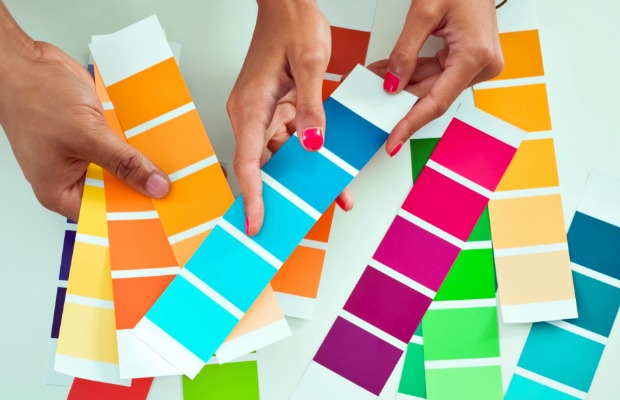If you’re new to the world of interior paint, you probably have a lot of questions. Do I need primer? Can I use a paint/primer combo? What the heck is ceiling paint, and which gloss is best for me? Before you get started, consider hiring local painters. While DIY painting is relatively easy, it’s also quite time consuming. If your mind is made up, read this guide before heading to the hardware store.
Primer
Primer is a thick coat of interior paint that is applied first. This process creates a strong base for subsequent coats of paint. While it may feel irritating to add layer upon layer of paint, this initial coat will make the final product look better and last longer.
Two-in-One Paint/Primer Combo
You’ve probably heard about two-in-one paint/primer combination products. You can use them, and they do work, but there are a couple of things you need to know. Two-in-one products work best when you’re painting over a surface that has already been painted. In these cases, make sure that the previous coat of paint is the same sheen as the two-in-one primer. For example, don’t use a semi-gloss two-in-one primer over a coat of glossy paint.
Ceiling Paint
For the inexperienced painter, ceilings can present unexpected challenges. First, make sure you purchase ceiling paint. It’s less shiny than wall paint and only takes one coat. When picking a color, it’s customary to paint ceilings lighter than walls. Pure white tends to look better in rooms without much natural light.
Wall Paint
Wall paint is sold in a variety of different sheens. Low-shine paints work better in low-traffic areas, while high-shine paints work better on high-use surfaces.
- Flat paint has a low shine and non-reflective finish. It’s not great for high traffic surfaces because it get dirty easily. Use this paint for ceilings or closet walls.
- Matte paint has a low shine and semi-reflective finish. It’s easy to clean, but can get dirty easily. Choose this paint for moderate traffic areas like bedrooms.
- Eggshell paint has a soft luminescent appearance. It’s one of the most popular sheens, and it’s perfect for moderate traffic areas like living rooms.
- Satin paint has a pearly finish. It’s best for high traffic areas or areas with exposure to moisture. Think kitchens.
- Semi-gloss paints are shiny and somewhat reflective. They’re perfect for areas with exposure to moisture such as bathrooms with low ventilation.
- Hi gloss paint is very shiny, and it’s perfect for high-use surfaces. It’s not generally used on walls, but does it work well on doors and cabinets.
After you picking your paints, it’s important to prepare your home for the paint job. It’s a lot of work, so consider hiring professional painters. If you’re determined to DIY this, your next steps include taping, setting up drop clothes, and washing your walls.


Leave a Reply